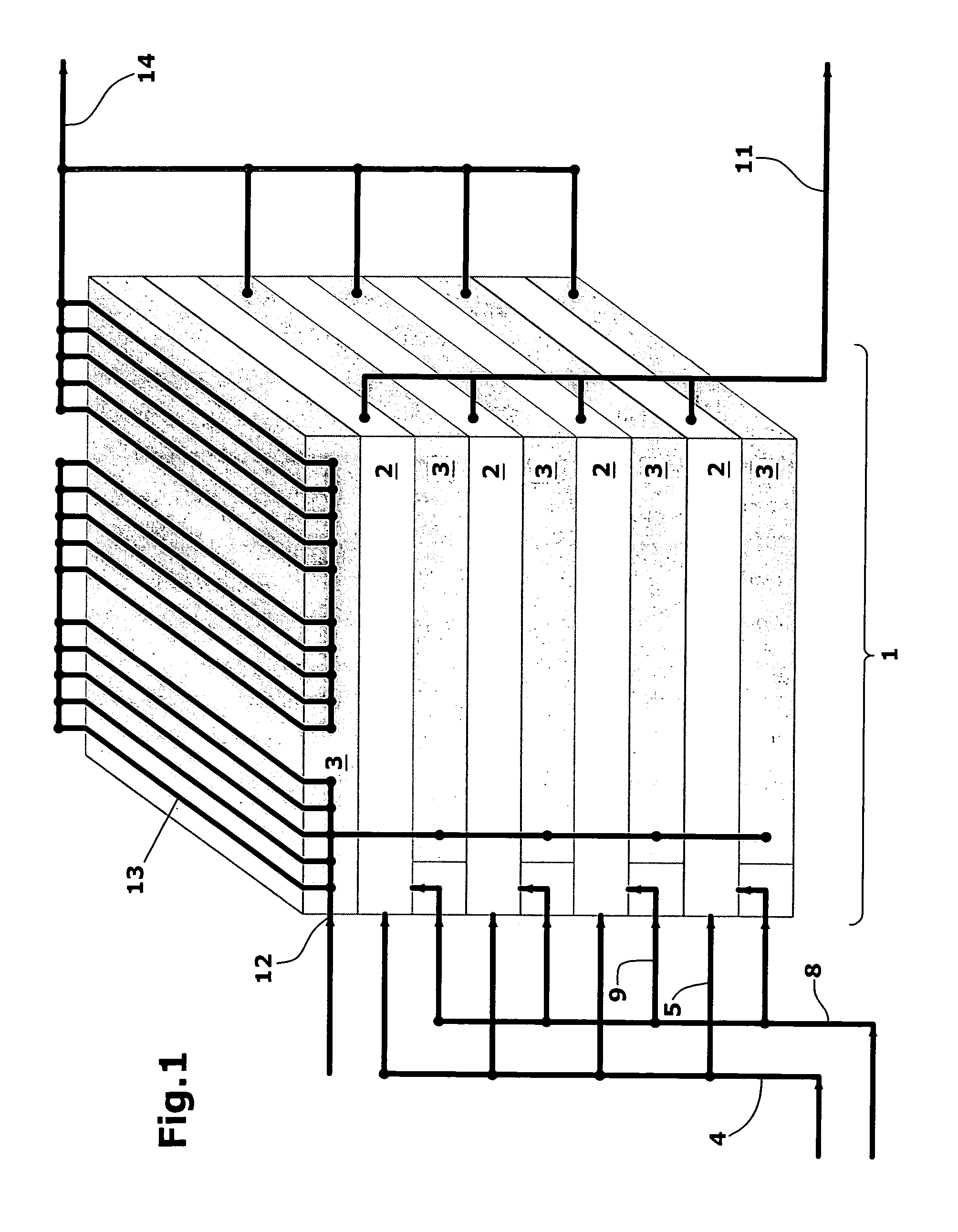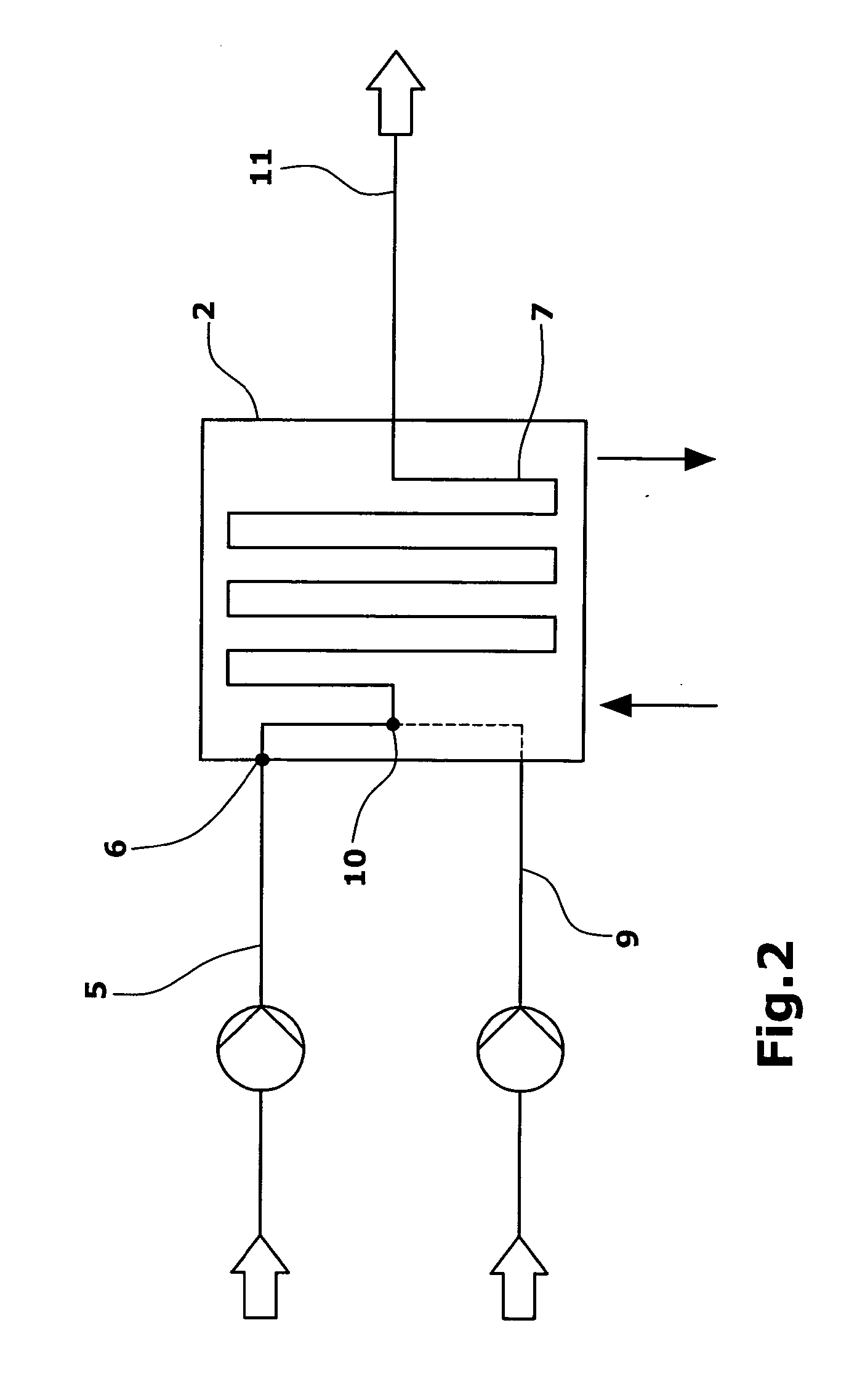Alkoxylations in microstructured capillary reactors
a microstructured capillary reactor and alkoxylation technology, which is applied in the direction of chemical/physical/physical-chemical processes, chemical apparatus and processes, organic chemistry, etc., can solve the problems of increased safety risk, unfavorable synthesis, and inability to manufacture, etc., to achieve high conversion rate and high uniformity and purity
- Summary
- Abstract
- Description
- Claims
- Application Information
AI Technical Summary
Benefits of technology
Problems solved by technology
Method used
Image
Examples
example 1a
[0091] FIGS. 1 to 3 show an inventive reactor which will serve as an example of a reactor for the “monofeed” process.
[0092] A microreactor 1 was manufactured from V2A stainless steel and had four plane-parallel reactor plates 2 which were enclosed at their outer principal planes and between one another by a total of five plane-parallel cooling plates 3. On one side, the reactor had a main feed line 4, provided with a metering pump, for liquid alkylene oxide, each of which fanned out into one feed line 5 per reactor plate, which opens directly into the inlet points 6 at the inlet of the reaction capillaries 7. A further feed line 8, provided with a metering pump, for the alcohol was disclosed at the same point in the reactor and fanned out correspondingly into in each case one feed line 9 per reactor plate, which were then conducted through in each case one cooling plate adjacent to the reactor plate and met the reaction capillaries 7 at an inlet point 10. The reaction capillaries h...
example 1b
[0094] The reactor corresponded substantially to the reactor of Example 1a, with the difference that, as shown in FIG. 4, the mutually parallel reaction capillaries 7′ do not run substantially within the plane of a reactor plate 2′, but rather within a plane at right angles thereto, and the reaction medium is conducted in a meandering manner in tracks which alternate in an antiparallel manner, whose antiparallel sections are long relative to the parallel sections and each run in the plane of a reactor plate 2′. FIG. 4 shows merely one reaction capillary. However, an array of four parallel reaction capillaries was designed.
example 1c
[0095] The reactor corresponded substantially to the reactor of Example 1a, with the difference that a reactor plate 2″, as shown in FIG. 5, accommodated four reaction capillaries 7″ which ran in a parallel zig-zag manner from the alcohol inlet point and combined on the product side to the product collection. In this reactor too, when the reaction capillaries, and thus the reaction volume and the reaction time, were shorter and the cooling surface was smaller than in the reactor of Example 1a, this reactor had the advantage that efficient reaction control is possible with high throughput and excellent mixing even at a very low space requirement.
PUM
| Property | Measurement | Unit |
|---|---|---|
| temperatures | aaaaa | aaaaa |
| pressures | aaaaa | aaaaa |
| hydraulic diameter | aaaaa | aaaaa |
Abstract
Description
Claims
Application Information
 Login to View More
Login to View More - R&D
- Intellectual Property
- Life Sciences
- Materials
- Tech Scout
- Unparalleled Data Quality
- Higher Quality Content
- 60% Fewer Hallucinations
Browse by: Latest US Patents, China's latest patents, Technical Efficacy Thesaurus, Application Domain, Technology Topic, Popular Technical Reports.
© 2025 PatSnap. All rights reserved.Legal|Privacy policy|Modern Slavery Act Transparency Statement|Sitemap|About US| Contact US: help@patsnap.com



